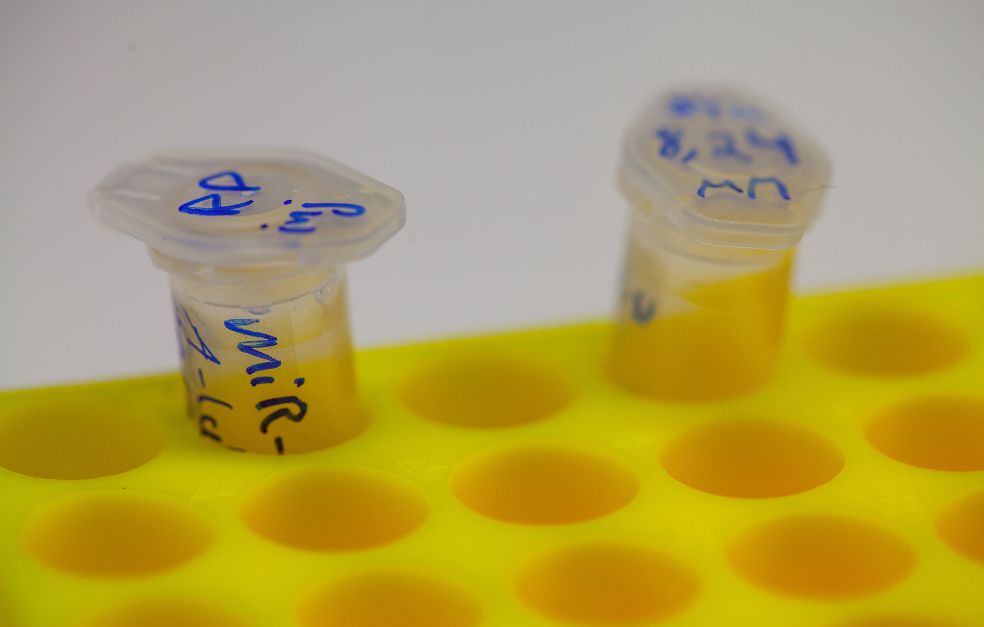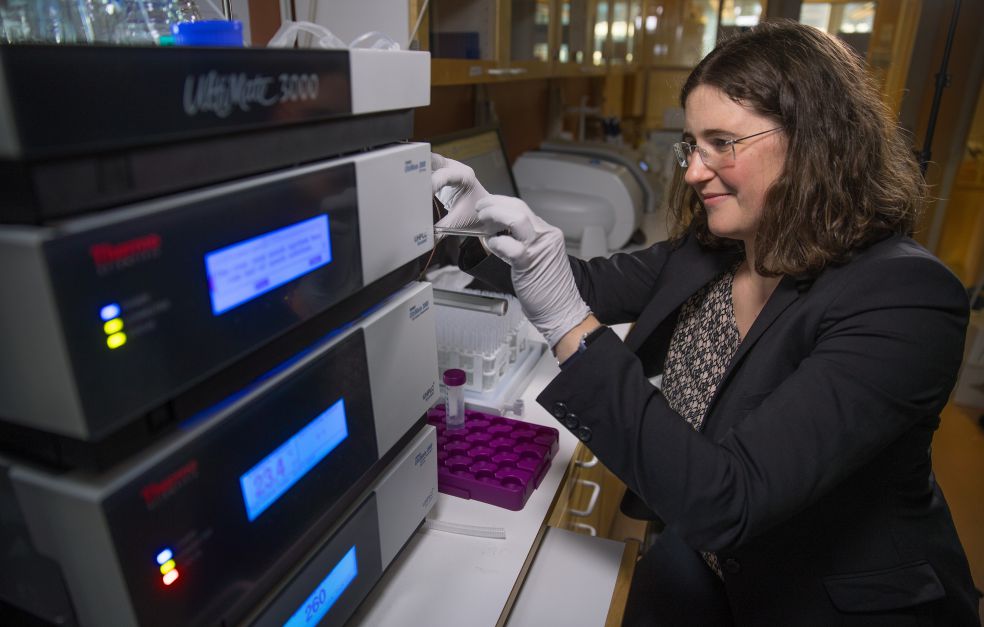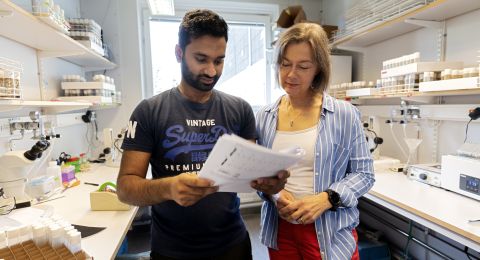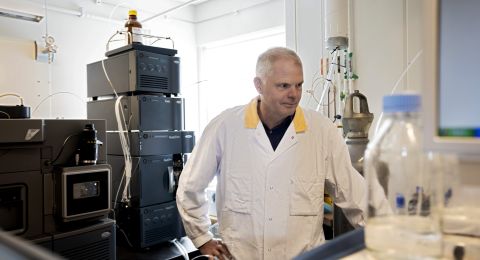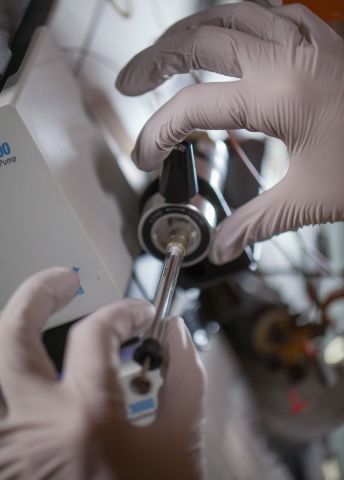
Project Grant 2016
MicroRNA control of neural development: Dissecting biological function with atomic resolution
Principal investigator:
Dr. Katja Petzold
Co-investigators:
Emma Andersson
Institution:
Karolinska Institutet
Grant in SEK:
SEK 33.5 million over five years
More than half of messenger RNA, made from DNA, is regulated by microRNAs. Yet it remains a mystery how these small molecules can decide the next step for messenger RNA – whether it will be activated, broken down or locked in a dormant state.
“A single microRNA can also control a whole network of different messenger RNAs, thereby fine-tuning protein levels,” explains Petzold, who heads a team of researchers in medical biochemistry and biophysics at Karolinska Institutet (KI), Solna.
Dynamic relationship
Ribonucleic acid – RNA – is a molecule usually assumed as a messenger carrying information from genes to proteins about the structure they will have. In other words, messenger RNA is a template for creating a copy of the gene. However, there is more to RNA than just messenger RNAs.
MicroRNAs, abbreviated to miRNAs, are short, single-stranded RNA molecules. They do not code for proteins. Instead, they play a part in regulation by binding to certain messenger RNAs, to influence their activities.
Petzold describes a dynamic interplay, capable of creating entirely new structures.
“MicroRNAs are flexible, and can adapt to different environments to find the right messenger RNA,” she explains.
With a grant from the Knut and Alice Wallenberg Foundation, Petzold has been able to start an interdisciplinary study to examine how microRNAs control brain cell development. She is carrying out the project in collaboration with another research team, led by Emma Andersson, a development biologist.
The studies are being made on living material and in test tubes. The researchers are using brain cells in biopsies from mice, and cell cultures from humans.
They had decided to examine a specific microRNA, and chose miR-34 a.
“We already know which messenger RNA it binds to, but not why it selects that specific one” says Petzold.
The material is analyzed using nuclear magnetic resonance spectroscopy (NMR), with atomic-level resolution. NMR is similar in many ways to an MR camera, which is used for diagnostic purposes in health care. NMR can also record movements.
“We observe every atom. The changes can be tiny,” Petzold explains.
The researchers are also using other biophysical techniques that they themselves have developed, to study molecular mechanisms.
One key to many doors
Petzold used NMR in the work for her doctoral thesis at Umeå University to study how the hepatitis B virus and the Helicobacter pylori stomach ulcer bacterium cause disease. In January 2014 she set up the Petzold Laboratory on a small scale at KI. Her team has grown year by year, and now has twelve members.
“I’ve recruited master’s students, doctoral students and postdocs with widely varying backgrounds, since our work spans such a broad spectrum,” she explains.
The NMR equipment was bought when the team was formed. Right from the outset the aim has been to understand how different RNAs interact and change their structure in order to perform their function.
“We already knew that one microRNA can switch many messenger RNAs on and off, but we didn’t know which one was selected when and why,” Petzold adds.
The discovery that a single microRNA can match around fifty different messenger RNAs was a breakthrough. That one microRNA can control so many different messenger RNAs (and with them the biological function their proteins fulfill), leads to the question, how and when this microRNA influences a certain messenger RNA. The researchers hypothesis that the microRNA can shift structure and therefore be a key that opens many doors – a master key.
Petzold believes that the master key can adapt to the situation, and that each new form has a new function in its interaction with other microRNAs. The current project aims to prove that this is so.
Constant new discoveries
Petzold hopes that knowledge about the interaction between different RNA molecules in brain cells will ultimately contribute to the development of new drugs.
“When we understand how it works, we will be able to generalize the system, since the processes should be the same in cells in other parts of the body. The project will lead to revolutionary tools for identifying key mechanism for microRNA regulation in living organisms. It’s really exciting. We’re making new discoveries all the time.”
Text Carin Mannberg-Zackari
Translation Maxwell Arding
Photo Magnus Bergström

